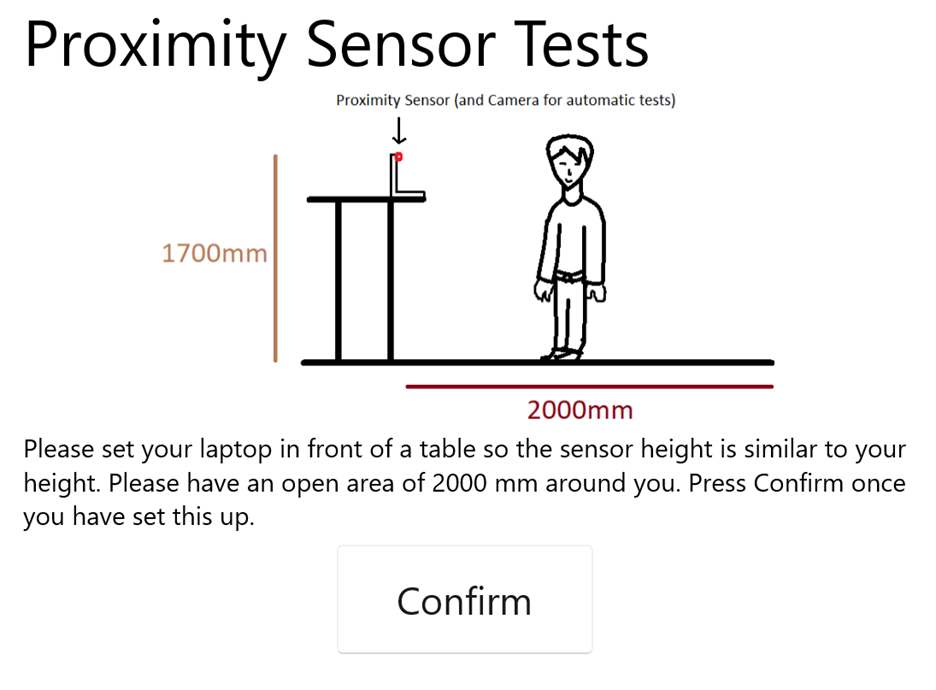Wake on approach
This section provides an overview of the various experiences enabled by Windows 11's presence sensing features. Each experience can be enabled independently, however Microsoft encourages the implementation of as many of these features as possible for a given hardware configuration.
Functional overview

Wake on approach: When the user approaches the device, it should recognize the user's intent to initiate use of the device. By the time the user is seated and ready to use the device, it is awake and beginning the authentication process.
Debounce mechanisms
The system has been manually locked, but the user is still present
The state machine tracks if a display on or off event has occurred while a human is detected. If the display has been turned off, which corresponds to lock, then the feature will not wake the system until the display is manually turned back on or user walks away then back. This prevents the system from being immediately woken after manually being put to sleep, such as the user manually locking via the Windows+L keyboard shortcut.
User is repeatedly moving in and out of the wake or lock distance threshold
The OS handles this case, no requirements to arbitrate this in firmware. The state machine will wait at least 15 seconds (5 seconds if the timeout is set to 10 seconds) between human presence-based locks to prevent the system from repeatedly switching between wake and lock states. This does not mean that the device will not be able to wake up immediately following a lock. An example of where this can occur is if the user is rocking back and forth in their chair so they repeatedly and quickly enter/exit the wake/lock detection distance. A single repeated motion switching between wake and lock state will trigger the mechanism.
Note
It is known that Windows Hello face ID is often combined with wake on approach for improved user experience. When testing the features together, it is known that sometimes Windows Hello face sign-in has a debounce timer of 2 minutes that requires user to dismiss login screen.
Exceptions
Prior to Windows 11 22H2 May 2023 update, the device will only wake from modern standby, not from S3 for HID-based sensors. In Windows 11 22H2 May 2023 update (build 22624 or later), HID-based sensors are able to support waking from lower power states like S3. In Windows 11 24H2 if in a state of excessive power drain, Wake on Approach wake may be disabled while on DC power to preserve battery.
Holistic experience benchmarks
This section defines what the user should experience when using this feature, regardless of the hardware facilitating the experience.
| Measure | Metric | Comments |
|---|---|---|
| Wake latency – average | <1.0 second average | Defined as the time between when the user reaches the distance directly measured (defined below) at 45 cm (18 in), 75 cm (29.5 in), and 120 cm (47.2 in) and the time when the device's screen turns on. Average of the three trials. |
| External monitor metrics | Same as internal | This is subject to change based on experimentation and further user research studies |
Accuracy – User Intent Recognition Framework:
| Measure | Description | Target |
|---|---|---|
| False Positives | The device wakes, but the user is not actually in front of the device. | <5% |
| False Negatives | The user is in front of the device, but the device does not wake up. | <5% |
Directly measured: The PC placed on a standard desk, 30 inches (76.2 cm) off the floor. The user approaches the desk and chair from >1.2m away. See Figure below. This concept is only used for consistency of measurement.

Example settings
The distance setting for Wake on Approach, the distance drop-down, is only available for distance capable devices.
Windows 11, version 21H2

Windows 11, version 22H2 and above
